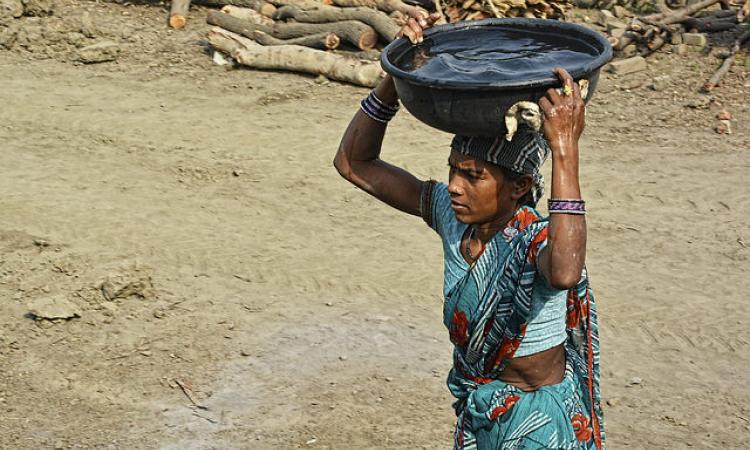
Rural India walks too far to quench their thirst
Going by the 2011 census data, 63 percent of rural India does not have a source of drinking water at home and they walk more than 500m daily to get drinking water. The data has revealed that households in rural Odisha take the longest average walking time to reach a water source and once filled, their water jugs weigh nearly 20 kg. Even in urban areas, about 20 percent of household spend more than half-an-hour to reach the water sources.
Skeletal fluorosis takes away 36 lives in a Jharkhand village
In Garhwa’s Pratapur village in Jharkhand, 36 people have lost their lives to skeletal fluorosis, a disease caused by excessive fluoride in groundwater that accumulates in bones and weakens them considerably. It has been found that the water in the village has seven times more fluoride than the permissible limits which is the highest contamination in the state. Moreover, out of the 12 hand pumps in the area, only two of them are fixed with fluoride filters.
Even the treated water of Yamuna is unfit for any purpose: Study
As per the study published in International Journal of Engineering Sciences and Research Technology, the water of the Yamuna river is so toxic, even expensive water treatment technologies are incapable of treating its polluted water. The river water has been found unsuitable for any use and its pH varies from 7.5 to 11.8 at different sampling points as against the prescribed limit of 7.4. However, the water quality was found to be good along areas where the river enters Delhi before the Wazirabad barrage.
App launched to monitor the water sources of Jharkhand
The chief minister of Jharkhand Raghubar Das has launched an app named Irrigation Source Monitoring System (I&SM) for monitoring the construction work of small irrigation sources. The app developed by Jharkhand Space Application Centre of Information Technology and the state’s e-governance department will update informaion on the irrigation sources through data and geo-tagged photographs. The state has set a target of constructing small ponds for the restoration of the rainwater.
Karnataka’s 15 major rivers highly polluted: CPCB
According to the report of Central Pollution Control Board (CPCB), 15 major rivers in Karnataka are highly polluted at some stretches. Out of the samples collected from 61 locations of 25 rivers, water at 38 locations of 15 rivers was found to be highly polluted. Following the revelation, CPCB has ordered the Karnataka State Pollution Control Board (KSPCB) to take strict action against the pollution in the rivers and stop the release of effluents and sewerage from towns and cities into the rivers.
This is a roundup of important news updates from June 18 -24, 2016. Also read last week's policy matters update.